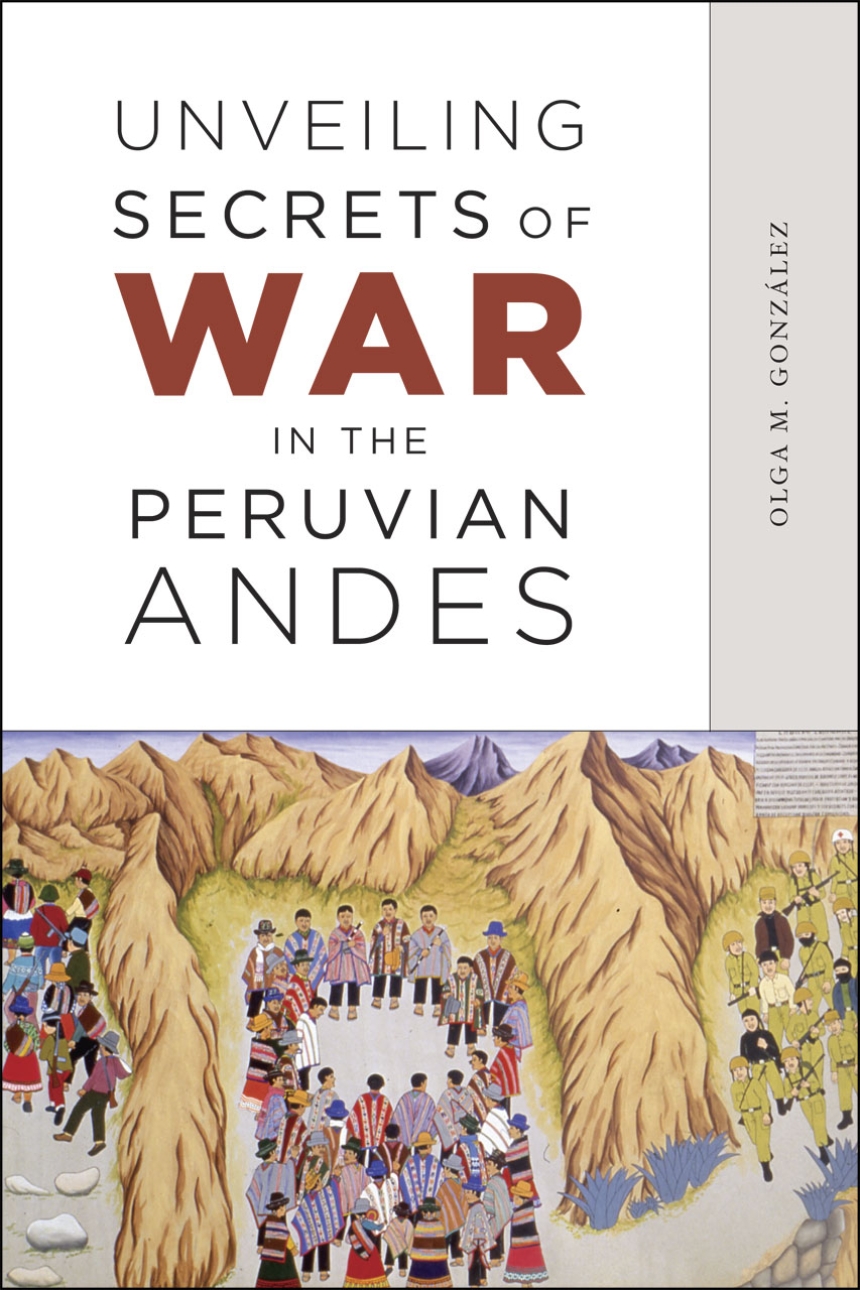Unveiling Secrets of War in the Peruvian Andes
The Maoist guerrilla group Shining Path launched its violent campaign against the government in Peru’s Ayacucho region in 1980. When the military and counterinsurgency police forces were dispatched to oppose the insurrection, the violence quickly escalated. The peasant community of Sarhua was at the epicenter of the conflict, and this small village is the focus of Unveiling Secrets of War in the Peruvian Andes. There, nearly a decade after the event, Olga M. González follows the tangled thread of a public secret: the disappearance of Narciso Huicho, the man blamed for plunging Sarhua into a conflict that would sunder the community for years.
Drawing on extensive fieldwork and a novel use of a cycle of paintings, González examines the relationship between secrecy and memory. Her attention to the gaps and silences within both the Sarhuinos’ oral histories and the paintings reveals the pervasive reality of secrecy for people who have endured episodes of intense violence. González conveys how public secrets turn the process of unmasking into a complex mode of truth telling. Ultimately, public secrecy is an intricate way of “remembering to forget” that establishes a normative truth that makes life livable in the aftermath of a civil war.
344 pages | 31 color plates, 4 maps, 1 table | 6 x 9 | © 2011
Anthropology: Cultural and Social Anthropology
History: Latin American History
Reviews
Table of Contents
Illustrations: Maps, Table, Figures
1 Introduction
Secret or Forgotten Memories?
The Making of the Ethnography
2 The Village and the Impact of Political Violence
Sarhua Llaqta: The Village of Sarhua and Its People
The Times of Danger
3 The Said and the Unsaid
An Unusual Visit
Intended Forgetfulness
Gossip
The Missing Image of the Disappeared Man
Envy
Ressentiment
Confession
The Power to Silence
4 The Production of “Truth”
Old and New Sarhuino Painting Traditions
Events, Blamed Actors and Time Sequence in the “Piraq Causa”
Absent Themes
Unexpected Viewers and the Question of “Truth”
The Role of Imagination
Traces of the Real
Relationship between the Image and the Text
Condensation, Exaggeration, and Accentuation
Symbolism
5 Social Disruption
The Threat of Individualism: An Inside Enemy
The Threat of Outside Enemies: A Call for Unity
A Threat to Abolish the “Varayoqkuna” System: A Sign of Disunity
6 A Familiar Secret
A Crucial Alliance
A Deferred Response
The Final Push
The Uprising
Capricho
The Expulsion
Sarhua Charged with Terrorism
Narciso Seeks Revenge
The Community’s Reaction
A Secretly Deserved Death
7 Ambiguous Realities
Narciso Appears in Dreams
Between the Visible and the Invisible
Qarqachas
Defiant Qarqachas
Condenados
The Condenado of Ranranizio
The Condenado of Aywiri
8 Behind the Visible
Another “Disappearance”
Secret 1: The Invisible Presence of the State
Secret 2: Communal Justice or Private Revenge?
Secret 3: The Community’s Endorsement of Justiniano andSendero
Secret 4: The Surrender and Pardon of Sarhuino Senderistas
9 Conclusions
Afterword Coda to an Investigation: New Findings and Old
Appendixes
Appendix A: The Piraq Causa Paintings
Appendix B: The General Law of Peasant Communities
Appendix C: Communal Meeting of November 30, 1996
Glossary of Terms and Acronyms
Notes
References
